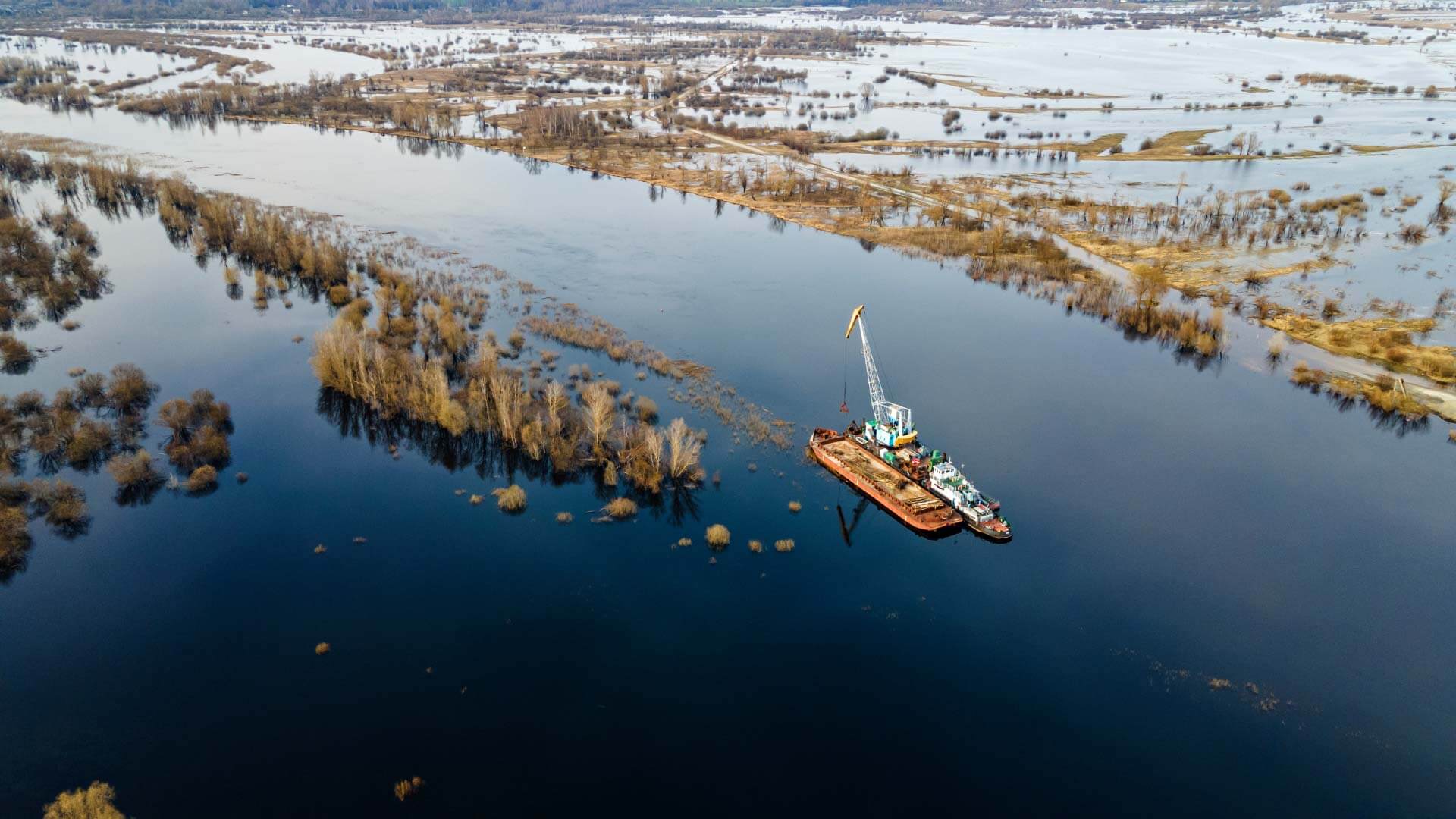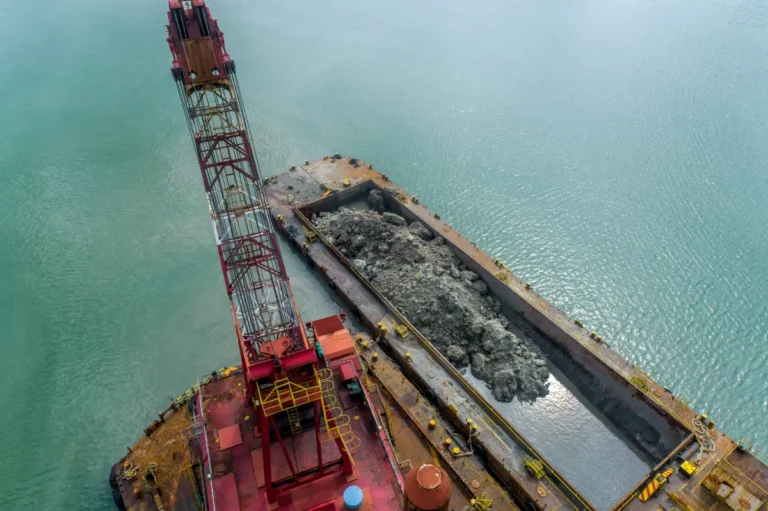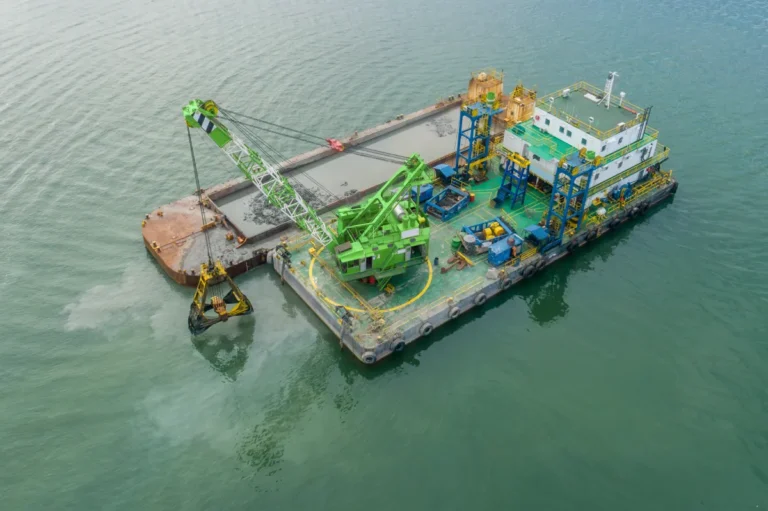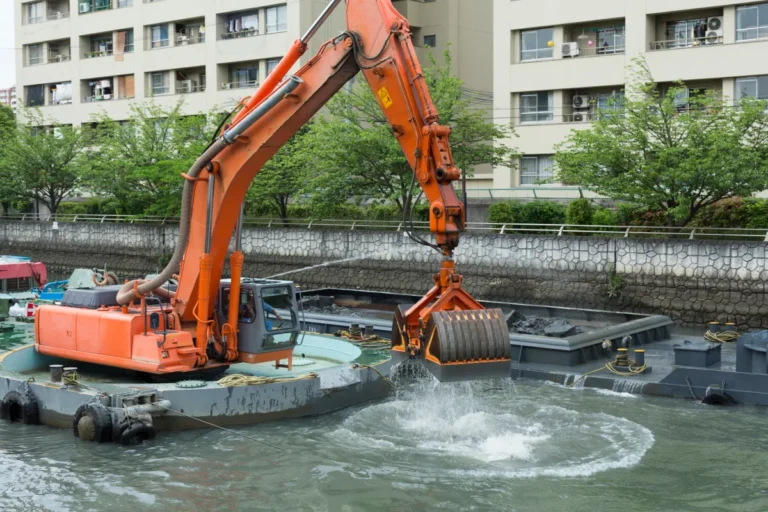Dredging is critical to maintaining and developing marine and inland waterways, ensuring navigability, environmental restoration, and infrastructure expansion. This excavation process removes accumulated sediment, debris, and other materials from the bottom of water bodies, preventing channel blockages and promoting efficient water flow. Industries such as shipping, construction, and environmental remediation rely on dredging to sustain operations and enhance aquatic ecosystems.
Among the various dredging methods, mechanical dredging is a highly effective solution, particularly in challenging environments such as shallow water and hard substrates. This method utilizes heavy-duty excavation equipment, including clamshell dredges, bucket dredges, and backhoes, to remove sediment with precision and control. Unlike hydraulic dredging, which relies on suction pumps to transport material as slurry, mechanical dredging physically lifts and relocates materials, making it ideal for denser and compacted sediments.
Selecting the appropriate dredging method is essential for optimizing efficiency, minimizing environmental impact, and ensuring cost-effectiveness. Understanding the advantages of mechanical dredging compared to hydraulic methods helps project managers determine the best approach for their specific site conditions. By evaluating factors such as sediment type, water depth, and environmental constraints, companies can make informed decisions that maximize productivity and sustainability.
Understanding Mechanical Dredging
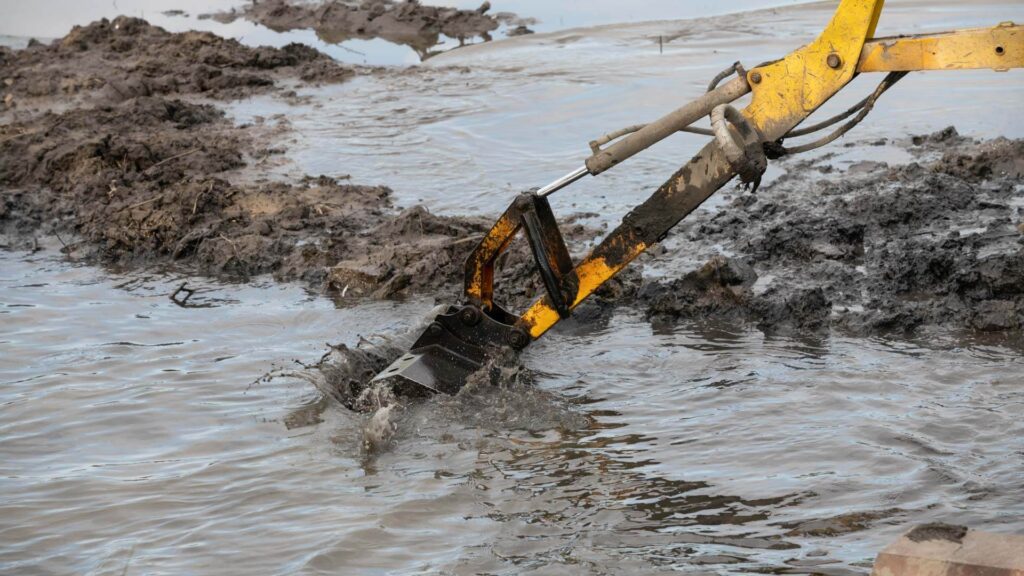
What Is Mechanical Dredging?
Mechanical dredging is a method of sediment removal that utilizes heavy-duty excavation equipment to dig physically and transport material from water bodies, unlike hydraulic dredging, which relies on suction to move sediment in a slurry mixture, mechanical dredging lifts and relocates materials using buckets, clamshells, or backhoes. This approach is particularly effective in environments where sediments are compacted, water levels are shallow, or precise excavation is required.
How Mechanical Dredging Works
Mechanical dredging involves deploying large machinery to excavate and remove sediments, debris, or rock from the waterbed. Depending on project requirements, equipment is typically mounted on barges or floating platforms or directly operated from the shore. Once the sediment is excavated, it is loaded onto transport barges or trucks or placed at designated disposal sites. Because this method does not require excessive water intake, it allows for more controlled removal with minimal environmental disruption.
Key Equipment Used in Mechanical Dredging
Several types of heavy machinery are used in mechanical dredging, each suited for different substrates and project conditions:
- Excavators: Commonly used for nearshore dredging, excavators with extended arms and specialized buckets remove sediment from waterways with precision.
- Bucket Dredges: These dredgers utilize a large bucket to scoop up material and deposit it into transport vessels, making them ideal for compacted soils and rock removal.
- Clamshell Dredges: These dredges feature a hinged bucket that opens and closes like a clamshell. They are effective for targeted excavation and minimizing turbidity.
- Backhoe Dredges: Mounted on floating platforms, backhoe dredges provide a high digging force, allowing them to remove dense and heavy materials more efficiently.

Mechanical Dredging vs. Hydraulic Dredging
When comparing hydraulic vs mechanical dredging, it’s important to consider project-specific factors such as water depth, sediment composition, and operational efficiency.
- Material Handling: Mechanical dredging is best suited for coarse, compacted, and rocky substrates, whereas hydraulic dredging is more effective for loose, fine-grained sediments.
- Operational Depth: Hydraulic dredging requires a sufficient water column to operate efficiently, while mechanical dredging performs well in shallow waters where hydraulic systems struggle.
- Environmental Impact: Mechanical methods offer better control over material excavation, reducing sediment dispersion and turbidity compared to hydraulic dredging.
- Project Scale: Hydraulic dredging is often preferred for large-scale sediment removal projects, while mechanical dredging is ideal for targeted excavation and precision work.
Because of its versatility and ability to handle difficult substrates, mechanical dredging is the preferred choice for many marine and inland waterway projects. By selecting the right dredging method, operators can optimize efficiency and minimize environmental impact while achieving project goals.
Advantages of Mechanical Dredging
Effective in Shallow Water
One of the key advantages of mechanical dredging is its ability to operate efficiently in shallow water environments. Unlike hydraulic dredging, which requires a sufficient water column to maintain suction and transport sediment as slurry, mechanical dredging functions effectively even in areas with minimal water depth. This makes it an ideal choice for projects such as:
- Channel maintenance in rivers and estuaries
- Port and harbor deepening near shorelines
- Environmental restoration in wetlands and marshlands
By using excavators, bucket dredges, and backhoes, mechanical dredging ensures precise sediment removal without the limitations imposed by deeper draft hydraulic equipment.
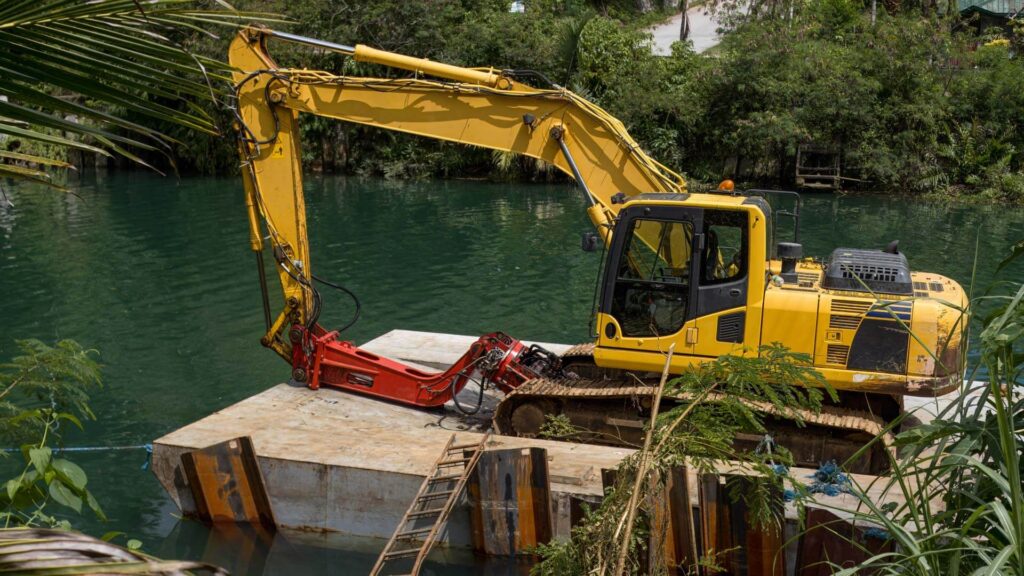
Superior Performance in Hard Substrates
Mechanical dredging is far more effective than hydraulic methods for compacted soils, gravel beds, or rock formations. Hydraulic dredges rely on suction to transport materials, which becomes inefficient when working with dense, cohesive materials. In contrast, mechanical dredging uses powerful excavation tools to break through and physically remove these harder substrates.
Common applications where mechanical dredging outperforms hydraulic dredging include:
- Mining and aggregate extraction from riverbeds
- Rock and clay excavation for infrastructure projects
- Removing debris and compacted sediments from heavily silted waterways
This capability makes mechanical dredging a preferred method in areas where traditional hydraulic suction systems struggle to achieve the necessary excavation depth or efficiency.
Precision and Controlled Material Removal
Another major advantage of mechanical dredging is its ability to provide targeted excavation with minimal environmental disruption. Hydraulic dredging, which relies on high-pressure suction, can create excessive turbidity, dispersing fine particles into the water column and affecting water quality.
Mechanical dredging, on the other hand, allows operators to:
- Directly remove material without excessive water agitation
- Minimize sediment suspension and water contamination
- Selectively extract specific materials without pulling in excess fines
This level of control is particularly important in environmentally sensitive dredging projects, where regulatory compliance and ecological preservation are priorities.
Efficient Material Handling and Disposal
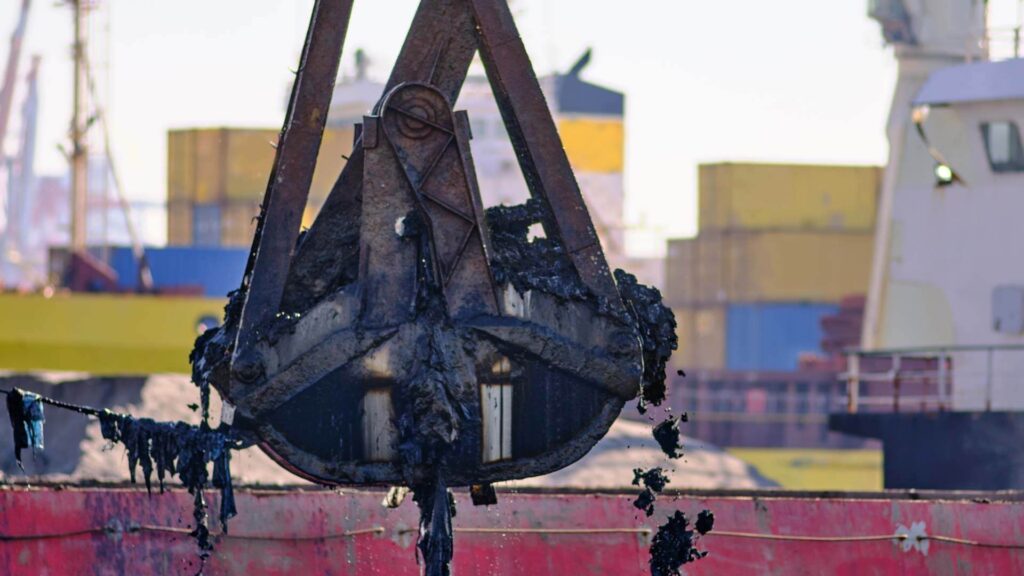
Unlike hydraulic dredging, which requires extensive processing to separate water from sediment, mechanical dredging offers a more efficient approach to material handling. Excavated material is directly loaded onto transport barges, dump trucks, or disposal sites, reducing the need for slurry containment and dewatering.
Key benefits of this streamlined approach include:
- Faster turnaround times for material removal and relocation
- Reduced reliance on sediment processing facilities
- Cost-effective transportation and disposal logistics
Mechanical dredging simplifies the process while improving overall project efficiency by eliminating the need for additional slurry treatment. This makes it an optimal choice for operations that require controlled excavation, minimal water disruption, and direct material relocation.
The combination of shallow water adaptability, superior excavation capabilities, precision, and efficient material handling underscores why many industries choose mechanical dredging over hydraulic alternatives. By understanding the distinct advantages of mechanical dredging, project managers can make informed decisions that enhance productivity and environmental compliance.
Hydraulic vs. Mechanical Dredging: A Practical Comparison
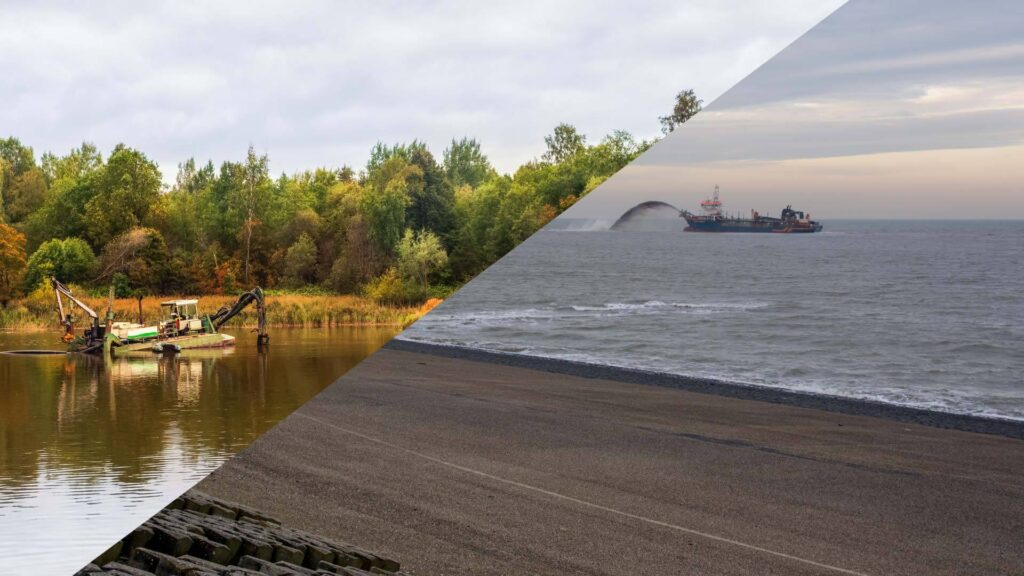
Choosing between mechanical dredging and hydraulic dredging depends on several factors, including sediment type, water conditions, environmental impact, and project cost. While both methods are effective for different applications, understanding their strengths and limitations helps determine the most efficient approach for specific dredging operations.
Material Suitability
The type of material being excavated plays a crucial role in selecting the right dredging method.
- Hydraulic dredging is most effective for fine-grained materials such as silt, sand, and soft sediments. It uses suction pumps to create a slurry mixture, which is then transported through pipelines for processing or disposal.
- Mechanical dredging, on the other hand, excels at excavating coarse, compacted, and hard materials such as clay, gravel, and rock formations. Using powerful excavation tools, it can remove denser materials more efficiently than hydraulic suction systems.
For projects that require precision excavation in areas with compacted or rocky substrates, the advantages of mechanical dredging make it the preferred choice.
Operational Conditions
The water depth and project environment significantly influence the dredging method selection.
- Hydraulic dredging requires a substantial water column to function efficiently, as it relies on the continuous movement of water and sediment through pipelines. This makes it ideal for deeper bodies of water where sediment can be transported over long distances.
- Mechanical dredging is better suited for shallow and confined areas where hydraulic equipment may not be effective. Because it does not rely on a water-based suction system, mechanical dredging can operate in environments with limited water depth, such as harbors, marinas, and inland waterways.
For projects in shallow water or locations with restricted access, mechanical dredging provides greater flexibility and operational efficiency.
Environmental Considerations
Dredging can have significant environmental impacts, making it essential to choose a method that minimizes ecological disruption.
- Hydraulic dredging can increase turbidity levels by suspending fine sediments into the water column, which may negatively affect water quality and aquatic life. Additionally, hydraulic methods often extract large volumes of water along with sediment, leading to extensive processing and treatment requirements.
- Mechanical dredging offers more controlled excavation, reducing sediment dispersion and minimizing water contamination. Because it physically removes material without excessive agitation, it is often the better choice for environmentally sensitive areas where regulatory compliance is a priority.
One key advantage of mechanical dredging is its ability to limit turbidity and water disturbance, particularly in restoration projects and operations near marine habitats.
Project Cost and Efficiency
Project scale, cost, and logistics also determine the best dredging approach.
- Hydraulic dredging is often more cost-effective for large-scale sediment removal, where vast amounts of material need to be transported over long distances. However, it requires extensive setup, including pipelines, booster pumps, and dewatering facilities, which can add to operational costs.
- Mechanical dredging is ideal for targeted excavation projects that require controlled material removal and direct placement. It reduces the need for slurry processing, dewatering, and additional infrastructure, making it a more cost-efficient solution for specific dredging needs.
Mechanical dredging can offer significant cost savings while ensuring efficient material handling for smaller or medium-sized dredging projects that require precision.
By comparing hydraulic vs mechanical dredging, project managers can determine which method best aligns with their operational goals, environmental concerns, and budget constraints. The decision ultimately depends on the project’s specific requirements, including sediment composition, water depth, and disposal logistics.
Key Industries and Applications for Mechanical Dredging
Mechanical dredging is a versatile excavation method used across multiple industries to maintain waterways, support construction projects, extract valuable resources, and restore environmental balance. Its ability to operate effectively in shallow water, remove compacted sediments, and provide precise material handling makes it the preferred choice for many dredging applications. Below are some of the key industries that benefit from its advantages.
Port and Harbor Maintenance
Ports and harbors require regular dredging to maintain navigability and prevent sediment buildup that can restrict vessel access. Mechanical dredging is widely used to:
- Remove accumulated silt, sand, and debris near docks, ship berths, and navigation channels.
- Deepen waterways to accommodate larger vessels and maintain safe draft depths.
- Ensure efficient cargo operations by preventing sedimentation that could interfere with port infrastructure.
Compared to hydraulic dredging, mechanical methods provide greater control over material removal, reducing the risk of disrupting nearby marine operations.
Construction and Land Reclamation
Infrastructure projects that involve building bridges, piers, or shoreline structures often require mechanical dredging to prepare the site and ensure stability. Key applications include:
- Excavating riverbeds and coastal areas for bridge foundations.
- Creating stable land for industrial and commercial developments through land reclamation.
- Strengthening shorelines and coastal defenses by removing unsuitable sediments and replacing them with reinforced materials.
Because mechanical dredging operates effectively in confined areas and can handle compacted materials, it is often the preferred choice for dredging near construction sites.
Mining and Aggregate Extraction
The mining and aggregate industries rely on mechanical dredging to recover valuable materials from water bodies, particularly in areas where suction-based hydraulic dredging is less effective. Common uses include:
- Extracting sand, gravel, and minerals from riverbeds, lakes, and reservoirs.
- Recovering high-value resources such as gold, iron ore, and phosphates.
- Processing and transporting materials directly from dredging sites to processing facilities.
The ability to efficiently excavate and transport coarse materials highlights the advantages of mechanical dredging in resource extraction projects.
Environmental and Remediation Projects
In environmentally sensitive areas, mechanical dredging provides a controlled method for removing contaminated sediments while minimizing turbidity and water disruption. It is commonly used for:
- Cleaning up polluted water bodies by extracting toxic sediments without excessive material dispersion.
- Restoring wetlands and marshlands to support biodiversity and improve water quality.
- Removing debris and obstructions that pose hazards to aquatic ecosystems.
Compared to hydraulic and mechanical dredging, mechanical methods offer superior precision, reduce the risk of spreading contaminants, and ensure compliance with environmental regulations.
By serving diverse industries, mechanical dredging remains an essential solution for maintaining waterways, supporting infrastructure projects, extracting valuable resources, and preserving natural environments. Its adaptability and efficiency make it a crucial tool in modern dredging operations.
Conclusion
When considering the best dredging method for a project, mechanical dredging stands out for its effectiveness in shallow waters, hard substrates, and precision excavation. Its ability to handle compacted sediments, reduce turbidity, and efficiently transport materials makes it a preferred choice for industries ranging from port maintenance and construction to mining and environmental remediation. Unlike hydraulic dredging, which excels in large-scale sediment removal, mechanical dredging offers greater control and adaptability. It is ideal for targeted excavation projects where environmental impact and material handling efficiency are key considerations.
Understanding the advantages of mechanical dredging can help project managers make informed decisions that align with operational goals, budget constraints, and regulatory requirements. Whether improving navigation channels, extracting valuable resources, or restoring ecosystems, mechanical dredging provides a reliable and cost-effective solution. As dredging technology continues to evolve, advancements in equipment and techniques will further enhance the efficiency and sustainability of mechanical dredging, ensuring its continued role in critical waterway and infrastructure projects.


